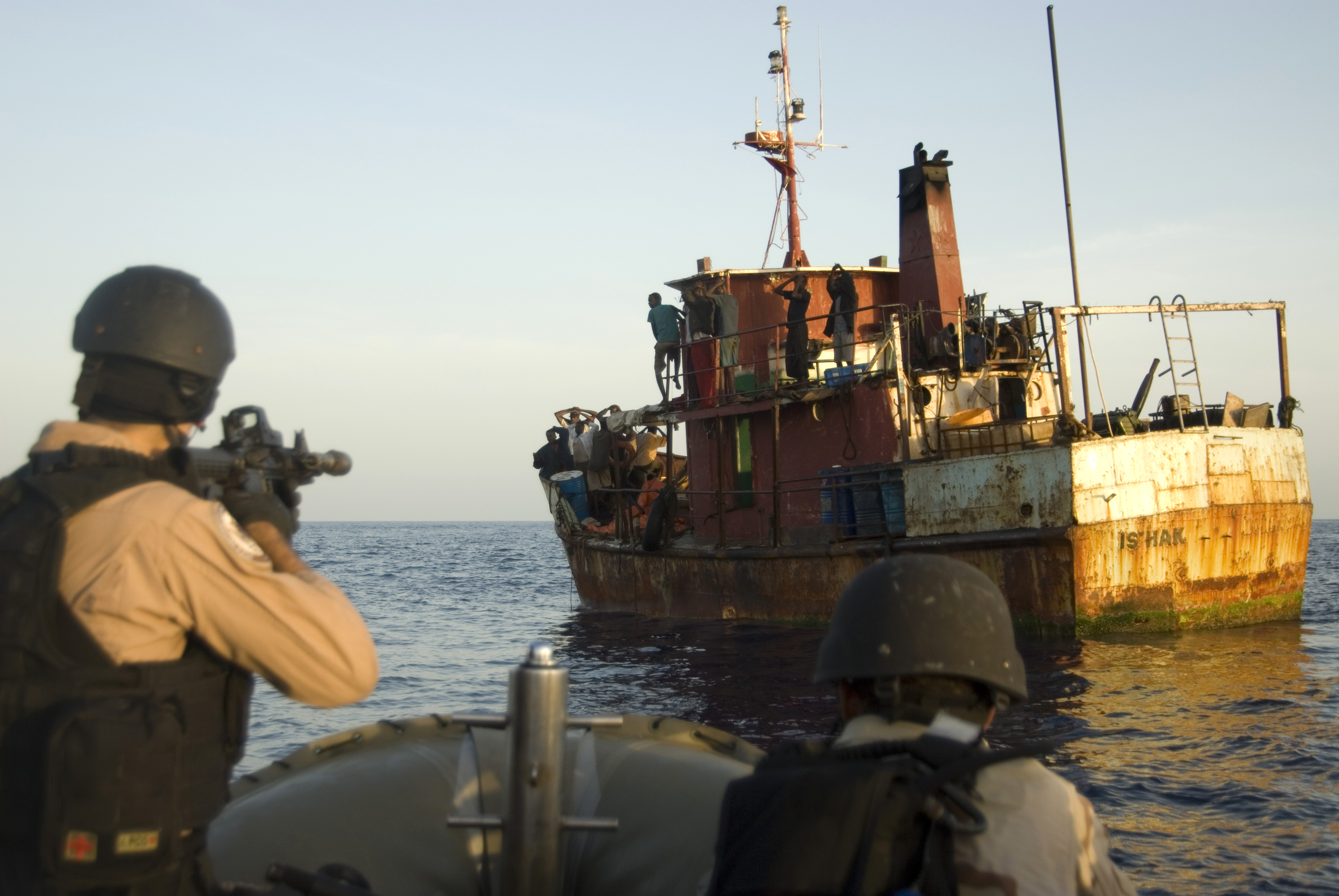Scattered across international waters off the coasts of Africa and the Middle East float ships carrying an array of armaments and skilled maritime security operators.
Yet these are not naval vessels. Rather, they are floating armouries operated by private maritime security contractors (PMSCs).
The armouries move in international waters serving as repositories for the weaponry, ammunition, and equipment necessary to defend merchant vessels from piracy as they transit through the High Risk Area (HRA). Some of the ships double as hotels for security contractors between stints on shipping vessels. This arrangement offers merchants convenience and flexibility, in addition to savings on time and fuel, as the contractors and their equipment can embark and disembark en route, without requiring the merchant craft to detour into port.
In the past, PMSCs served clients through ports. However, PMSCs increasingly offer their services at sea as a consequence of the high cost involved in the use of land-based armouries, fears of violating international arms trafficking laws, weapons restrictions in national waters, and the fees and logistics required for moving weapons through ports.
These floating armouries currently operate in a legal grey area. While groups such as the International Maritime Organization and the International Organization for Standardization have recommended the implementation of standards and guidelines, PMSCs are under no obligation to abide by them. In fact, PMSCs often register their ships to blacklisted states like Mongolia and Sierra Leone, which feature notoriously low safety and security standards for seagoing vessels and have little extraterritorial powers to enforce their regulations. However, the United Kingdom has attempted to bring some semblance of regulation to the industry, granting licences to dozens of UK PMSCs and armouries it deems safe and professional.
Due to the lack of international regulations surrounding floating armouries, no official registry exists and their exact numbers are unknown. Estimates in the Small Arms Survey 2015: Weapons and the World place the number of weapons housed by PMSCs in the HRA in the range of 7,000 to 10,000, with some ships possessing the capability to carry as many as 1,000 firearms.
These are not purpose-built watercraft. Instead, the armouries are converted tugs, patrol vessels, and other ships—some of which are very old—that have been repurposed to fill a void in maritime security that arose as a response to increased piracy, the majority of which originated from Somalia.
As a result of the absence of international oversight governing the private maritime security industry, as well as the differing designs of the watercraft, the security measures on these retrofitted ships are often shoddy. This leaves some to speculate that they are merely floating targets for nefarious actors such as the pirates they wish to deter. Moreover, as the vessels loiter on the fringes of Yemeni and Somali waters, there is the potential that al-Qaeda or other terrorist organizations may attempt to hijack or rob the caches.
Evidence of the fine legal line these vessels tow was illustrated on January 11, 2016, when Indian courts sentenced 35 men aboard the Seaman Guard Ohio to five years of hard labour for violating sections of the Indian Arms Act. The crew and 25 security guards had been apprehended on October 12, 2015, by an Indian multi-agency task force comprised of members of the Coast Guard and Navy among others. Indian officials claim that the ship operated by American firm AdvanFort, but registered in Sierra Leone, entered Indian waters without any documentation for their weaponry that included semi-automatic firearms. Those sentenced included ex-servicemen from the UK, Estonia, and India.
While their legal standing is wanting, the services provided by the PMSCs are effective. According to the Economist, since armed guards began providing merchant vessels security to counter the threat of Somali pirates almost a decade ago, no ship with them aboard has been successfully hijacked. These contractors have become such potent deterrents of piracy that their services are often made mandatory by insurance providers for vessels travelling through the High Risk Area.
However, the heyday of the floating armoury may be coming to an end. Due to the presence of the PMSCs and diligent anti-piracy operations conducted by countries such as Canada, Somali piracy has dropped to a mere 4% of global maritime piracy and armed robbery activity in 2015. As a result of the decreased threat of piracy in the region, on December 1, 2015, new boundaries of the High Risk Area were put into effect, removing areas including Tanzanian waters, the Gulf of Oman, the majority of the Red Sea, and waters East of 065 longitude. With a smaller area of operations, it is tenable that PMSCs will be utilized less in the future, if there is no resurgence of territorial piracy or maritime terrorism.




